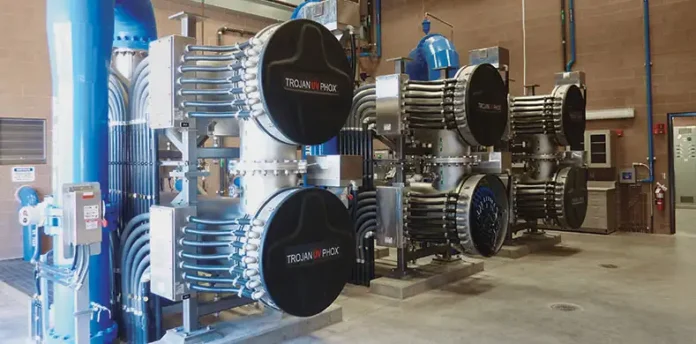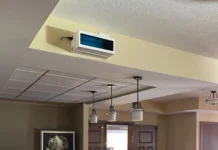Izzy Medeiros, MS Student, Civil and Environmental Engineering, University of New Hampshire, izzy.medeiros@unh.edu
James P. Malley Jr., Ph.D., Editor-in-Chief, UV Solutions and Professor of Civil and Environmental Engineering, Department of Civil and Environmental Engineering, jim.malley@unh.edu
The focus of this quarter’s survey was reaching out to facilities that have applied UV-AOPs for water reuse and those for remediation of waters with organic micropollutants, as well as contaminants of emerging concern. The survey pool admittedly was limited to begin with, but the 10 respondents (owners) provided interesting factors to consider.
Question 1. Please explain the UV-AOP system currently used and the goals of using the technology.
- Six facilities indicated they are applying UV-H2O2 as part of a multibarrier approach to eliminate chemical or microbiological risks. Three of these specifically mentioned the specification of 95% removal of NDMA and 1,4-dioxane. Four facilities indicated they are using UV-H2O2 to treat contaminated groundwaters that contain a variety of solvents, including TCE and BTEX compounds. Of these remediation facilities, three indicated they are successfully maintaining treated water levels of these compounds to below 5 μg/L.
- Four of the facilities indicated that they depend upon the UV-H2O2 for partial disinfection of bacteria, virus and other human pathogens, as well as removal of organics, as required by their regulators.
- Six of the 10 facilities indicated that the UV-H2O2 process is followed by granular activated carbon (GAC) contactors. Reasons for this GAC were mentioned as removal of H2O2 residual, removal of toxicity and additional barrier to organic contaminant breakthrough. One respondent asked whether or not the new ion exchange resins might be a better option than the current GAC being used.
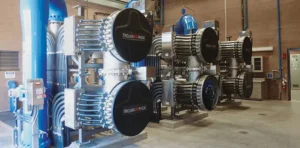
the globe.
Question 2. If these UV-AOP or similar facilities were installed and operated again, what changes would be made?
- Three of the facilities have indicated that their current focus is on PFAS-related compounds, considering emerging concerns and future regulations. Each speculated that, pending further research and development into understanding the best ways to remove PFAS, it is likely the UV-H2O2 would be replaced at the end of system life with ion exchange (IX) and GAC, alone or in series.
- Four facilities indicated that at the end of the fiscal life (i.e., “once it is paid for”) of the system, they would be exploring alternatives emerging from research and development advances, including a switch to UV-LED technology, use of ozone alone or related AOPs with new methods that better control bromate and brominated DBPs.
- Four facilities indicated they believe UV-H2O2 followed by their GAC is a solution that will carry them through 2050. They intend to maintain the current technologies and replace them with the latest versions of the same when the time comes.
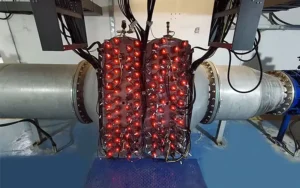
Question 3. Please indicate the major advantages of the current UV-AOP system.
- All 10 respondents indicated the system ensured regulatory compliance and approvals, which provided a full-scale solution to their water quality challenges.
- Five respondents indicated that the current system had the smallest siting area requirements of all the options considered.
- Six respondents indicated that their current systems had the lowest total life cycle cost of all the options considered.
- Two of the respondents indicated their system has the most promising life cycle assessment (LCA) results of the alternatives examined, which achieved their vision and mission of using the most sustainable systems available.
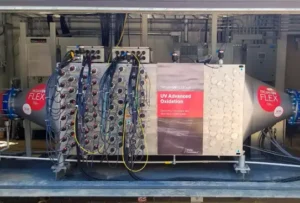
Question 4. Please indicate the major disadvantages of the current UV- AOP system.
- All respondents indicated in one way or another the H2O2 aspects of the system as a recurring concern. Five indicated increasing chemical costs. Three mentioned difficulties in obtaining a reliable supply or difficulty with the stored H2O2 degrading more rapidly than anticipated. Two respondents specifically noted frequent operation and maintenance issues with the chemical feeding systems (e.g., pumps, dosing, residual monitoring) for the H2O2.
- Four respondents indicated a continuing desire to reduce the electrical costs of the UV-H2O2 system, with one mentioning efforts to find alternative means of generating the UV light.
- Three respondents indicated concerns with the large number of mercury-containing UV lamps in their system and the periodic need for mercury spill clean-up during offline breakage of the lamps during routine cleaning or replacement.
- Six respondents indicated in one way or another that, given current analytical chemistry advances and the related public and regulatory sensitivities to part per trillion levels of human-made compounds, they are taking a new look at their systems to ensure that compounds like PFAS are not entering from the UV-H2O2 components (e.g., specifically as a contaminant of the H2O2) or being formed from unexpected reactions.


